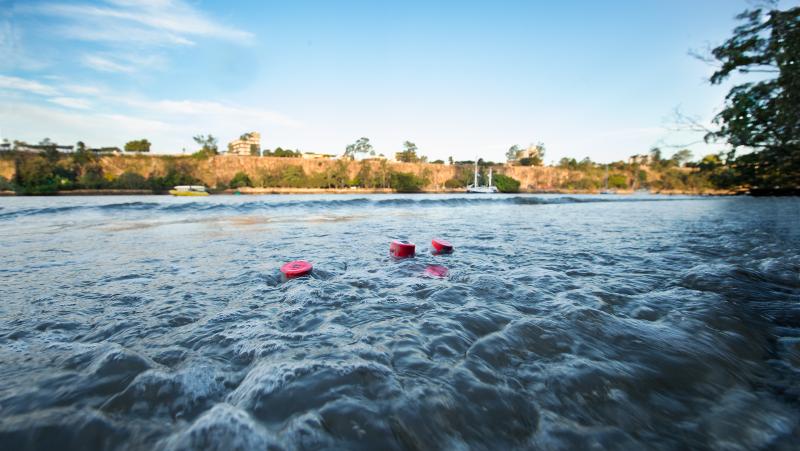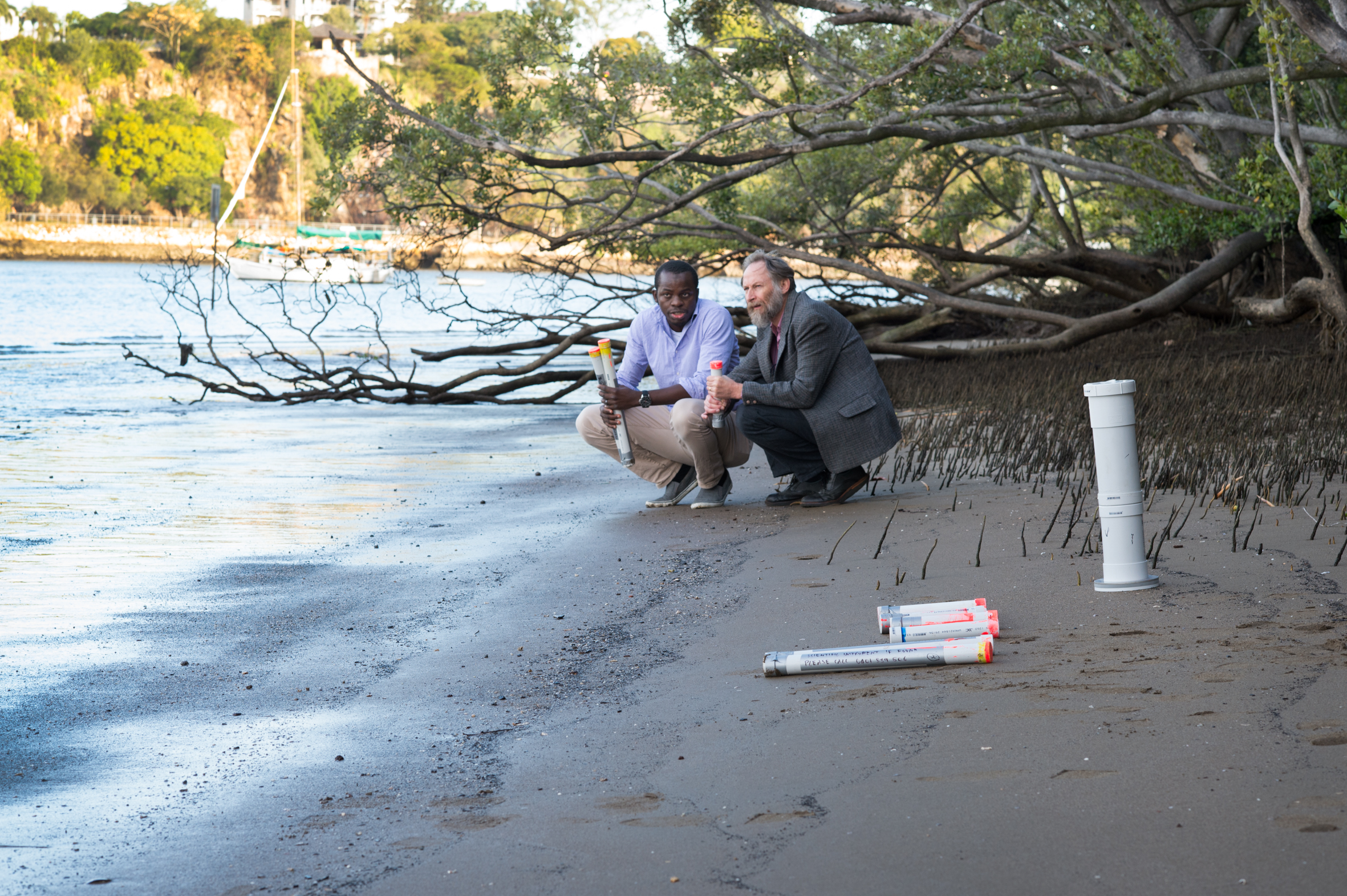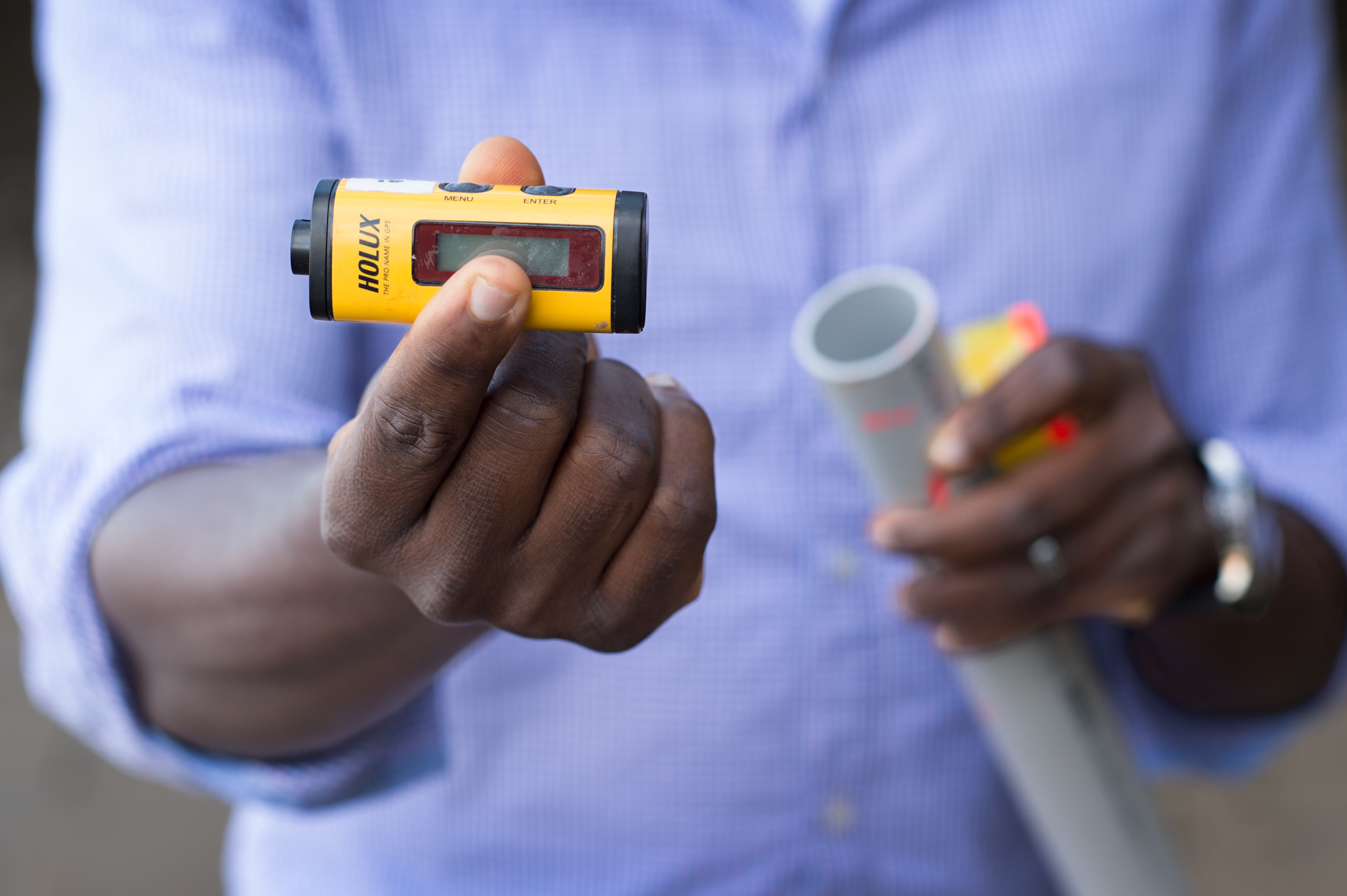
A new floating device that goes with the flow of rivers to deliver real-time water quality and velocity data is set to be the next defence against flash floods, polluting run-off, and algal blooms.
Housed in a relatively humble PVC pipe casing, The Drifter is the product of years of team research by QUT mechanical engineers Professor Richard Brown and Dr Kabir Suara and satellite engineers Professor Yanming Feng and Dr Charles Wang.
Professor Brown said that before this breakthrough, we did not know what was happening to water quality and flow in real-time.
“The Drifters make it possible to get vital information on river waters as it happens,” Professor Brown said.
“Floating and fixed Drifters are currently undergoing field trials with the Sunshine Coast Council at Lake Currimundi and Pumicestone Passage under an ARC Linkage grant.
“We are testing their measurement of water pH, turbidity, salinity, dissolved oxygen and temperature – all indicators of water quality.”

The Drifters could also be used to investigate land-use changes such as agricultural practices and waste disposal.
“Each Drifter is equipped with GPS so that we can track its location. They are specially weighted so they float only 1 to 2cm above the water’s surface to ensure they are carried by the water and not the wind.
“Testing so far has shown high-resolution data on location, velocity and flow or fluxes of sediments and contaminants.
“Tests on fixed Drifters show their GPS data is sensitive to height measurement and so it could be used to monitor both sediment transport and water height during a flood.”

Dr Suara said the Drifters would become a relatively affordable way to monitor rivers, creeks and estuaries at several locations simultaneously.
“They will enable us to pinpoint sources of pollutants in run-off and help understand how particular pollutants are mixing with the rest of the water,” Dr Suara said.
“We will be able to monitor how changes in rainfall affect sediment load between summer and winter which could enable better understanding and prediction of algal blooms in particular locations.”
Professor Brown said the Drifter could be invaluable in monitoring floodwaters.
“Drifters could be used in an emergency situation – you could drop them out of a helicopter to safely monitor the velocity and depth of the floodwaters in order to issue warnings.
“We hope that the low cost and accessibility of the Drifters will make it possible for community science projects by catchment management groups.”
QUT Media contacts:
Niki Widdowson, 07 3138 2999 or n.widdowson@qut.edu.au
After hours: Rose Trapnell, 0407 585 901 or media@qut.edu.au.


